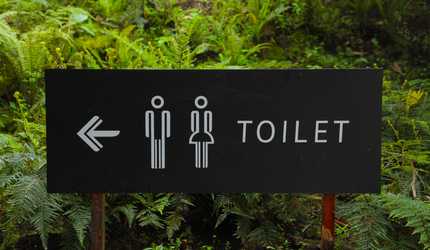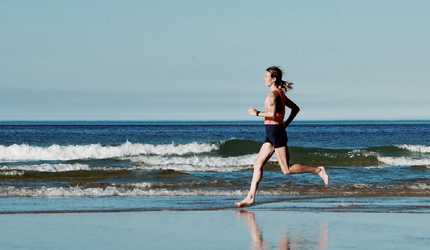Top Winter Training Tips for Runners

The winter season is the perfect time to transform your body; strengthen your quads, glutes, hamstrings, and prime your legs to go the distance.
Some runners decide to race throughout all winter, but many decide to use this period to recover from last year’s races and prepare for a stronger season ahead.
Others run purely for the love of running and for general fitness too. In particular improving the running form and cardio. These winter tips apply to everyone of all levels and abilities. They are beneficial to helping you become a stronger runner and staying injury free.
You can use the winter period to improve your running in Leeds focusing on these three very important areas in your training:
- Running technique.
- Strength.
- Mobility.
These sessions don’t have to be very long and can be adapted to suit your ability and running experience.
Running Technique
Arm Drive
Our arms are our drivers when we run and give us balance, synchronicity and speed. They also promote optimum movement throughout the whole running motion. This is the first tip to achieving a good running technique.
Improving your Arm Drive
Position your arms to around 90-degrees with your hands relaxed in front of your shoulders.
Just let them swing back gently like a pendulum so the hand goes from the front of your shoulders to the side of your hips.
Arm drive is all about backwards motion. The arm will come up naturally from the backwards swing without any extra force. Try to run tall and relax your shoulders.
Arm Crossing
There should be a natural rotation in our spine when we move but crossing the arms in front of the body causes an excessive rotation. This not only wastes energy but also affects the fluidity and efficiency of the whole running pattern.
Try keeping your hands in front of your shoulders and feeling the skim of the fingertips coming down to the side of your hips.
How far the arms go back and then up depends on the speed you are going. You don’t have to force them up to shoulder height if you’re running easy. Thinking of the backwards swing and keeping the line in front of your shoulders is what is key.
Stay relaxed and just keep leading with the elbows going gently back.
Run Tall and Land Light
A leg cycle is the term used for the movement of the legs during running motion. This is a little more technical to learn so it is recommended that you see a Running Technique Specialist or Coach to ensure you learn this safely and correctly.
What you can do though is to think run tall and land light. Skip your feet off the floor gently behind you trying not to use any extra push or force.
This may be difficult to do at first until your running muscles become stronger. By introducing strength and mobility to your programme will make this easier. Not only will you become stronger but your running muscles will be trained to fire and work properly when they should.
Strength Training
A stronger runner means a faster runner and also decreases the risk of injury. This is why regular strength sessions should be an essential component to every runners programme.
There are many run specific strength exercises to choose from, but what’s most important is that you build up safely and at a level that’s relative to you.
It’s very common and really easy to injure yourself if you perform an exercise incorrectly or try to progress your programme too soon. Correct form in all your exercises is key to prevent this happening.
The Glutes and Core
The glutes and core are essential running muscles which are commonly overlooked or trained incorrectly. The glutes power you forward and a strong core helps you stay lifted. Both areas work together to dynamically stabilise the whole body when you run.
All your leg muscles and upper body are obviously involved in the running pattern too, but it’s generally the glutes that runners don’t train properly and so usually need more attention.
Strength Exercises and Levels
Beginner
As a beginner you could start off with matt based exercises for your glutes and core such as planks, crunches, bridges, clams etc; leg exercises such as lunges, squats and calf raises. At first practice these exercises with no weights focussing on correct technique.
Progression
Once you have correct technique in your standing exercises and have gained your base strength you can add load by adding light weights. As you progress you can then add activation exercises for your glutes such as crab walks and tap backs with bands.
Advanced
More advanced exercises could then be introduced. These would include deadlifts, more single leg exercises and plyometrics. These exercises are a lot more technical and demanding and so without building up your base strength first these exercises will be too strong to perform correctly.
Simply put. If you can’t perform a squat without your knees rolling in or your back arching you shouldn’t really add weight or plyometrics to it. Build up safely and relative to your own individual level.
Seeing a Run Technique Specialist, Personal Trainer or Instructor at your local gym would be the best way to ensure you are progressing safely with the correct instruction.
Decrease your Running Training
During the winter you can drop your running training to around 70% or less. This will then free up the space and energy to introduce strength training without over training or risking injury.
This not only means dropping volume but decreasing the intensity too. You can use the winter to build a strong base both running and strength wise in preparation for the spring and summer races in the year ahead.
Go for more steady runs with a harder run once every week or two depending on your individual ability and fitness. This could be a hill session, tempo session, longer repeats or a parkrun. Try something different to keep you motivated. Maybe a trail run or cross country race for a change.
Warm-up Well
It’s really important to warm-up well and even more so as the temperatures drop. You could do basic warm up exercises in the house before you go out if it helps.
Exercises such as arm circles, chest openers, trunk twists, leg swings, moving hamstring and calf stretches are great mobility exercises to include in your warm up before your runs.
Make sure you warm down well and stretch off after every run too.
Mobility Programme
A mobility routine is an essential component to add to your programme to open up the joints, promote full range of motion and help stay injury free.
Muscle tightness restricts movement throughout a joint. If your shoulders are tight it will restrict your arm drive, particularly in the backwards swing. It also puts the body out of its natural alignment affecting our ability to breathe efficiently.
Shoulders, Back and Chest
Mobilising the shoulders, back and opening up the chest before you run can be as important as learning the arm drive movement itself.
Hips
If your hips are tight it will inhibit the glutes firing properly, restrict hip extension and affect your whole leg cycle. This is another important reason why you should open up the hips and warm up properly before you run.
Spine
You could include specific exercises in your mobility programme such as arm scissors, snow angels, a variety of hip mobility exercises and lying spinal rotations etc. Spinal mobility and loosening of tight back muscles are very important for a runner too, along with flexibility and stretching. If you’re not familiar with mobility exercises or don’t feel too confident in doing them by yourself, why not try a Pilates or Yoga class (or both).
If you introduce these three components into your training programme this winter and improve your running technique, strength and mobility, there is no doubt you will be a stronger, faster and more efficient runner next year.
Written by Nicky Green
Running, movement and rehabilitation specialist.
The Running and Movement Studio Leeds



